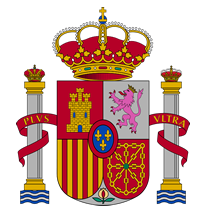Spain: Government
Key Figures
- Chief of State:
- King Felipe VI
- Head of Government:
- President of the Government of Spain Pedro Sánchez Perez-Castejon
Overview
- Government Name:
- Kingdom of Spain
- Constitution:
- Adopted in 1978; focused on basic rights & public liberties, duties of the citizens, principles of social & economic policy, the structure of the partial monarchy & parliament. This Constitution served as a means to begin the Spanish transition to a democracy.
- Government Type:
- Parliamentary Constitutional Monarchy

Index of Economic Freedom
Country Risk Rating
Government Branches
| Main Powers | Election Process | Election Cycle 1 | |
|---|---|---|---|
| Executive | Monarch is commander-in-chief of the Spanish armed forces and nominates a candidate for president of the government. Prime minister is president of government, conducts domestic and foreign policy, civil and military administration, and defense of the nation under the king. |
Prime minister is elected by parliament. |
Prime Minister: No fixed term length |
| Judicial | Responsible for processing substantial complaints of wrongdoing against prominent persons such as government ministers, assembly of senators general assembly of representatives and members of the various regional parliaments, senior judges, including the President and judges of the Constitutional Court (the highest tribunal in the Kingdom). |
Appointed by the monarch. |
Mandatory retirement age of 70; 9-year terms |
| Legislative | Congress of Deputies & Senate: enactment of any law & amendment of the Constitution; Leader of Opposition: Heads an alternative "Shadow Government" which reflects the vies of the largest party not currently in the Congress of Deputy. |
Senate has 208 members elected by plurality vote in multi-member constituencies and 49 members appointed by regional legislatures. Congress of Deputies members are elected through a closed-list proportional representation system. |
4 years |
Regional Trade Blocs
International Organization Participation [2]
Environmental Agreements [3]
Tax Information [2]
- Tax Authority:
- Ministry of Finance
- Tax Name:
- VAT
Sources:
- ElectionGuide http://www.electionguide.org/
- EY, http://www.ey.com
- CIA World Factbook, https://www.cia.gov/the-world-factbook/
- U.S. Bilateral Relations Fact Sheets http://www.state.gov/r/pa/ei/bgn/


